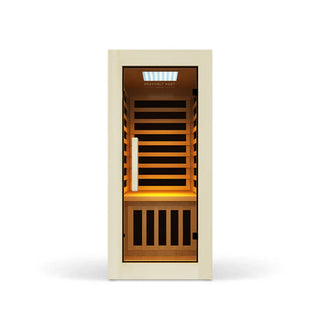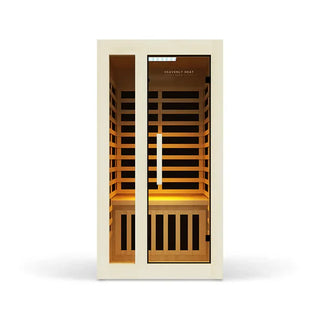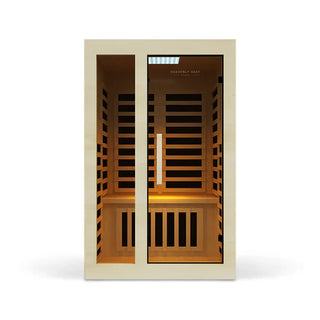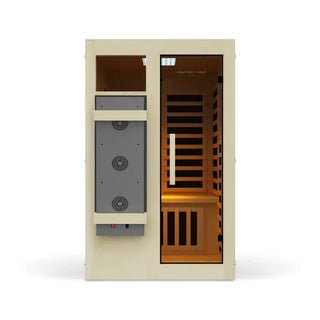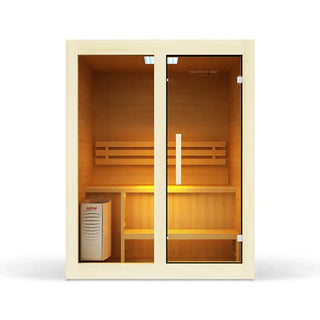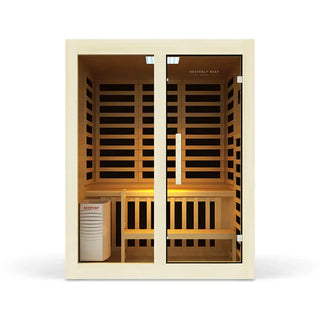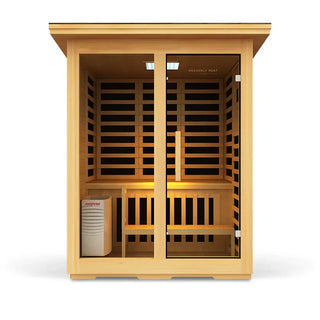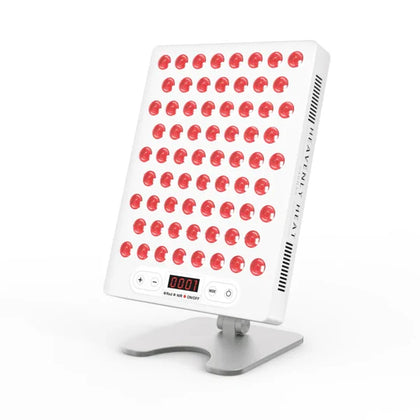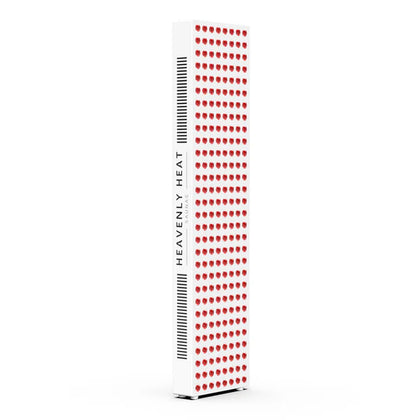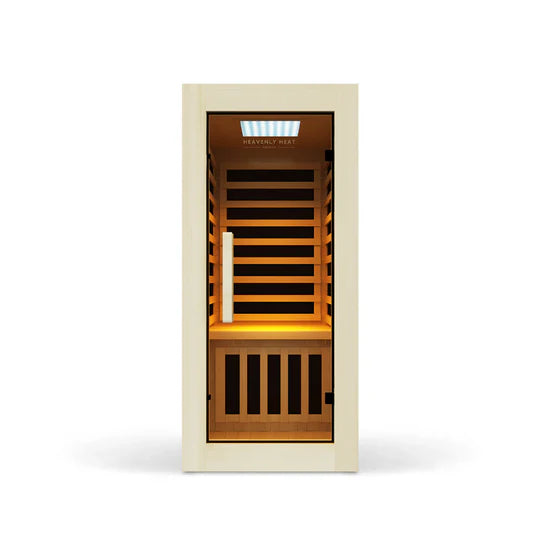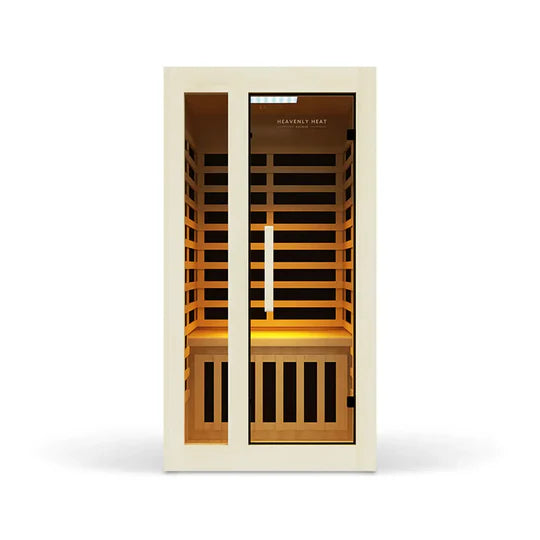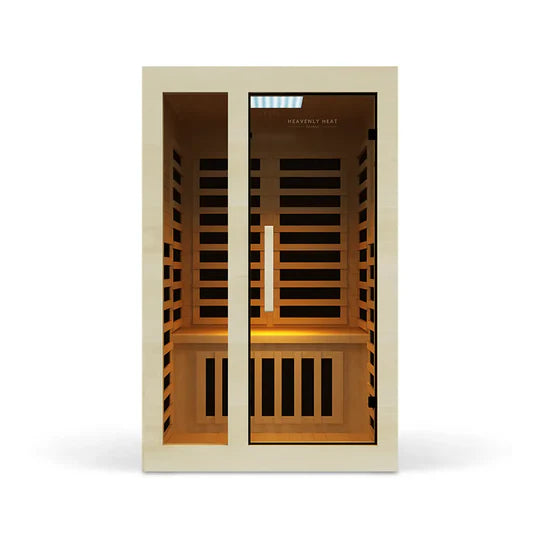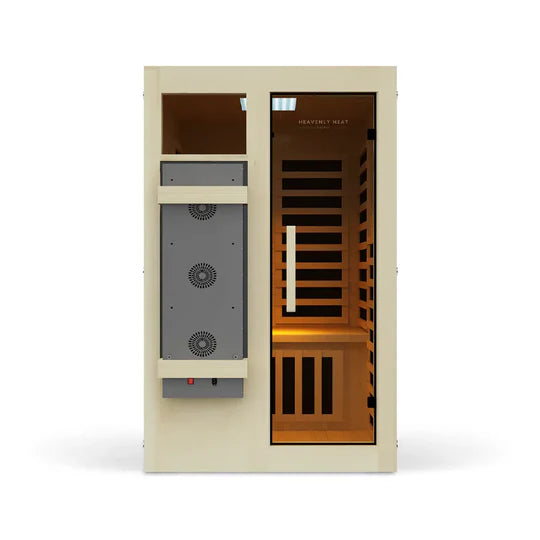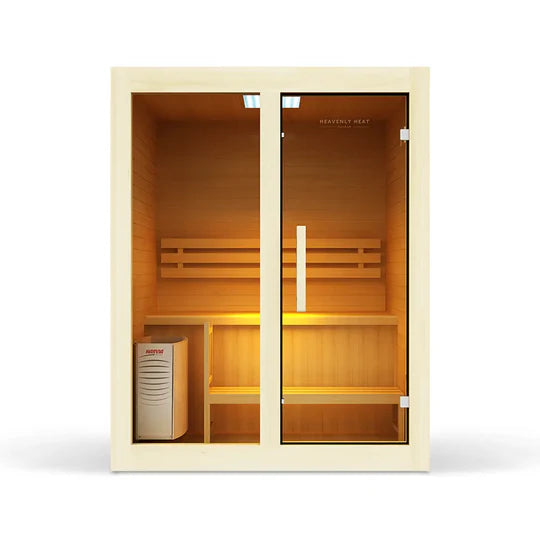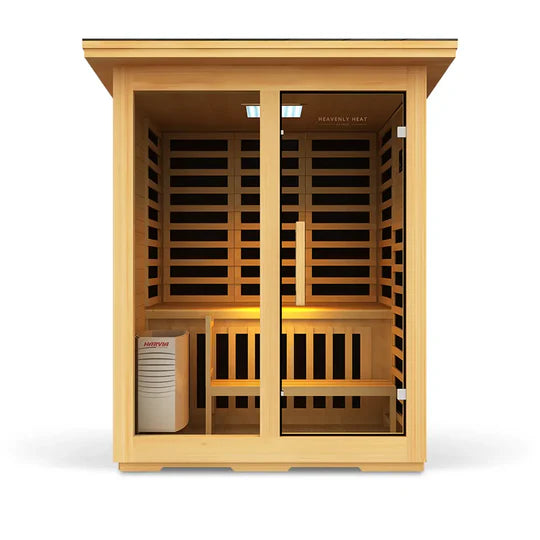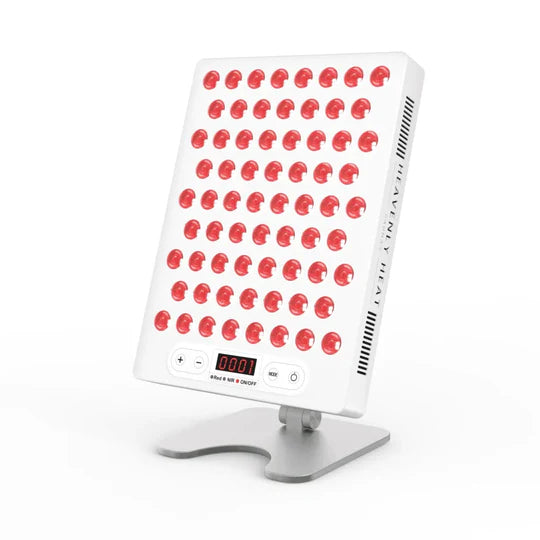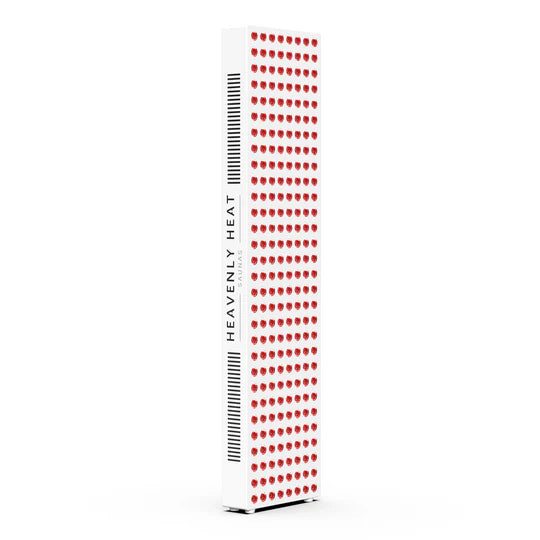Infrared vs Steam Sauna: Benefits, Differences & Best Choice

Table of contents
Not sure whether to choose an infrared or steam sauna? Picking the wrong one could mean missing out on the benefits you need, whether it's detox, relaxation, or better skin.
Infrared heats your body directly, while steam fills the air with moisture. This guide breaks down the differences, benefits, and safety factors to help you make the best choice.

Key Takeaways
-
Infrared saunas heat your body directly, while steam saunas use humid heat to warm the air.
-
Infrared saunas are more energy-efficient and cost less to install and maintain.
-
Steam saunas improve respiratory health, while infrared saunas promote deep muscle recovery.
-
Infrared saunas run at lower temperatures, making them more comfortable for longer sessions.
-
Steam saunas require plumbing and frequent maintenance to prevent mold buildup.
What You Need to Know About Infrared and Steam Saunas?
- Infrared saunas heat your body directly without warming the air: Infrared saunas use special light to warm you from the inside out. You feel the heat deeply, but the air around you stays cooler.
- Steam saunas fill the whole room with moist heat: Steam saunas work by boiling water to create steam, heating both the air and your body. This gives a warm, humid experience that surrounds you completely.
- Infrared heat goes deep and helps relax your muscles: Because infrared heat enters the muscles, it’s great for easing pain, improving blood flow, and helping your body relax after stress or exercise.
- Steam helps you breathe easier and sweat more: The moisture in steam saunas opens up your airways, making it easier to breathe. It also encourages heavy sweating, which can leave your skin feeling cleansed.
- Both saunas remove toxins, but infrared may go deeper: Both types help your body get rid of toxins through sweat. However, infrared saunas may go deeper into the tissues for a more intense detox.
- The right sauna for you depends on how you like to feel warm: If you enjoy dry, focused warmth, infrared might be your style. If you prefer a soothing, steamy environment, a steam sauna could be the better choice.

Main Differences Between Infrared and Steam Saunas
Heating Technology
Infrared saunas use radiant heat to warm the body directly, while steam saunas create humidity by boiling water.
Infrared panels emit light that penetrates the skin and heats muscles from within, whereas steam saunas rely on a heater or generator to fill the space with moisture-rich heat.
Infrared saunas heat up faster and provide soothing warmth without intense humidity.
Temperature Levels
Infrared saunas operate between 110°F and 150°F, offering a milder yet deeply penetrating heat. Steam saunas run at higher temperatures, between 150°F and 200°F, with moist air that makes lower temperatures feel hotter. Infrared saunas’ lower temperatures allow for longer sessions without overwhelming heat.
Energy Efficiency
Infrared saunas are more energy-efficient since they heat the body directly rather than warming the entire space.
Steam saunas must continuously heat water, leading to higher energy use. Over time, infrared saunas cost less in electricity and maintenance, making them a budget-friendly choice.
Health Benefits
- Infrared saunas help your muscles recover faster after workouts: Infrared saunas are known to support muscle recovery, especially after intense exercise. They relax tight muscles and help you feel better quicker.
- Deep heat from infrared saunas helps remove toxins from your body: According to Dr. Brian Clement , the heat goes deep into your body, helping to push out toxins through sweat, which supports your overall health.
- Better blood flow means your muscles heal faster: The heat from the sauna improves blood circulation, which delivers more oxygen and nutrients to your muscles, helping them repair more quickly.
- Using infrared saunas can reduce muscle soreness and keep your strength: A study showed that people who used infrared saunas after exercise felt less sore and were able to keep more of their strength the next day.
- One sauna session can make you feel more recovered and ready: Participants in the study also said they felt more recovered mentally and physically after just one session, showing how quickly it can make a difference.
- Great option for anyone who trains hard or works out often: Whether you're an athlete or just someone who exercises a lot, infrared saunas can help reduce soreness and keep your body feeling strong and ready.
Rank |
Benefit |
Best Sauna Type |
Why? |
| 1️⃣ | Muscle Recovery | Infrared Sauna | Deep heat penetrates muscles, improves circulation |
| 2️⃣ | Detoxification | Infrared Sauna | Enhances sweating and toxin elimination |
| 3️⃣ | Respiratory Health | Steam Sauna | Moist air clears sinuses and improves lung function |
| 4️⃣ | Skin Hydration | Steam Sauna | High humidity prevents dryness and hydrates skin |
| 5️⃣ | Stress Relief | Both | Both provide relaxation and improve mood |
Cost Comparison
Infrared saunas are more affordable to install and operate. They require minimal setup, while steam saunas need plumbing, drainage, and ventilation, increasing costs.
Steam saunas also require frequent maintenance to prevent mold buildup. Over time, infrared saunas are the more budget-friendly option.
| Feature |
Infrared Sauna |
Steam Sauna |
| Heating Technology |
Direct heat via infrared panels |
Humid heat from steam generator |
| Temperature Range |
120°F - 140°F |
110°F - 120°F |
| Humidity |
Dry heat |
High humidity |
| Energy Efficiency |
Lower energy consumption |
Higher energy use due to steam generation |
| Health Benefits |
Deep muscle penetration, detoxification, and pain relief |
Improved respiratory health, intense sweating, and hydration |
| Maintenance |
Minimal, occasional panel cleaning |
Requires plumbing, mold prevention, and steam generator upkeep |
| Installation Cost |
Lower ($1,000 - $10,000) |
Higher ($3,000 - $15,000) |
Safety: Is Infrared or Steam Sauna Safer?
Temperature Control
Infrared saunas heat the body with light waves, while steam saunas create moist heat.
Infrared saunas typically maintain steady heat between 110°F and 140°F, whereas steam saunas range from 120°F to 200°F and can feel overwhelming due to humidity.
Proper temperature control in both types prevents dehydration and overheating.
Risk of Dehydration
- Your body loses a lot of water when you sit in a sauna: Dehydration is a common effect of any sauna use. As your body heats up, it sweats to cool down, and that sweat is water your body needs.
- Steam in the air doesn’t stop your body from drying out: Even though steam saunas feel moist, they still make you sweat just like infrared saunas. The wet air doesn’t stop water from leaving your body.
- Losing too much water can weaken your gut lining: A study found that dehydration from saunas made the gut wall more “leaky,” allowing things through that shouldn’t pass. This can mess with digestion and overall health.
- Dehydration silently increases inflammation in the body: According to the research , Even without clear damage to cells, sauna-related dehydration caused a rise in inflammation, which can build up silently in the body.
- Drinking enough water protects you during and after sauna use: To stay safe, you need to hydrate properly. It’s not just about avoiding thirst, it’s about protecting your gut and overall health.
Skin Sensitivity
Steam saunas help keep skin hydrated, while infrared heat can sometimes cause dryness or redness in sensitive individuals.
Using a light moisturizer before and after a session can prevent irritation. If you have reactive skin, start with short sessions to observe your response.
Breathing Concerns
Steam saunas create high humidity, which can clear nasal passages but make the air feel heavy for those with respiratory conditions.
Infrared saunas have drier air, making them easier to breathe in some cases. If you have lung issues, start with lower temperatures and shorter sessions.
Heart Health
- Both sauna types help your heart by boosting blood flow: Infrared and steam saunas both increase circulation and raise your heart rate, which can be good for your heart when used properly.
- Dry saunas make your heart work harder in the beginning: According to a study , In the first 10 minutes, the dry (Finnish) sauna raised pulse rate and blood pressure more than the steam sauna, putting more early pressure on the heart.
- After some time, both saunas affect your heart in a similar way: By the 20-minute mark, the difference between dry and wet saunas disappears, and both have the same overall impact on heart rate and blood pressure.
- Spending too long in any sauna can put stress on your heart: Even though both sauna types can be good for your heart, staying in too long can raise health risks by overloading your cardiovascular system.
- Using saunas safely depends on how long you stay inside: To get the heart health benefits without the risks, it's important to keep sauna sessions short and controlled, no matter the type you use.
Pregnancy Safety
Heat exposure can raise core body temperature, which is a concern during pregnancy.
Steam saunas, with their intense heat and humidity, increase the risk of overheating. It’s best to avoid saunas unless approved by a doctor.
Heat Intolerance
People sensitive to heat may find infrared saunas more comfortable due to their lower, gradual heat.
Steam saunas, with their high temperature and humidity, can feel overwhelming. Starting with lower temperatures and shorter sessions can help build tolerance.
How to Choose the Right Sauna for You?
Understand Your Sauna Goals
Before choosing a sauna, consider your priorities. For stress relief, steam saunas provide warm, humid air, while infrared saunas excel at deep detox and muscle recovery.
If general wellness is your goal, both offer excellent benefits. Infrared saunas allow longer sessions at lower temperatures, while steam saunas provide intense heat in shorter periods.
Types of Saunas
Saunas vary in design and function. Traditional saunas heat the air with a stove, while infrared saunas warm the body directly with light.
Steam saunas add moisture, making them great for skin hydration and congestion relief. Barrel saunas offer efficient heat circulation and work well outdoors.
Choosing the Right Sauna Material
The type of wood affects a sauna’s durability and comfort. Cedar and spruce resist moisture and warping, while basswood and aspen are hypoallergenic.
High-quality materials improve insulation and reduce energy costs. Cedar is a top choice due to its natural resistance to mold and cracking.
Considerations for Heating Elements
Infrared saunas use carbon or ceramic panels for efficient, consistent heat. Traditional saunas use electric or wood-burning heaters, creating a more intense experience.
Maintenance also varies, wood-burning saunas need regular cleaning, while infrared and electric heaters require minimal upkeep.
Budgeting for Your Sauna
Costs depend on size, type, and installation. Infrared saunas tend to be more affordable, while steam and traditional saunas require more complex setup.
A small home sauna starts at $1,000, but high-end models can exceed $10,000. Portable saunas offer budget-friendly options.
Portability
Portable saunas are lightweight, easy to store, and ideal for small spaces. Many models fold for convenient travel. Look for breathable fabric, a sturdy frame, and efficient heating elements for the best experience.
Safety Features to Look For in a Sauna
Automatic shut-off, proper ventilation, and stable heating elements enhance sauna safety.
Infrared saunas often offer better heat control, making them safer for extended use. Regular maintenance and adherence to safety guidelines ensure a risk-free experience.

Which Sauna Works Best for Home Use?
Infrared and steam saunas differ in space, installation, cost, and energy efficiency. Infrared saunas come in compact designs, heat up faster, and use less electricity.
Steam saunas, while excellent for sweating, require more space and setup. In the long run, infrared saunas tend to be more cost-effective due to lower maintenance and energy costs.
Infrared vs Steam Saunas: Installation and Maintenance Costs
Upfront Installation Costs
Infrared saunas are easier and cheaper to install. Plug-and-play models cost between $1,000 and $5,000, while built-in units range from $3,000 to $10,000.
Steam saunas have higher costs, starting at $3,000 and reaching $15,000 due to plumbing, ventilation, and steam generator expenses.
Electrical Requirements for Infrared vs. Steam Saunas
Infrared saunas typically use a standard 120V outlet, though larger models need 240V.
Steam saunas require a dedicated 240V circuit and professional electrical work. Infrared saunas are simpler to install.
Maintenance Frequency
Infrared saunas need occasional cleaning, while steam saunas require frequent upkeep to prevent mold and mineral buildup.
Descaling steam generators and checking drainage systems are essential for long-term performance.
Cost of Replacement Parts
- Replacing a steam heater can be one of the biggest expenses: Steam sauna heaters usually cost between $300 to $1,500 , but if the generator needs replacing, you could spend up to $3,000 . This makes it one of the most expensive parts in a steam sauna.
- Infrared heating panels are cheaper but may need replacing more often: Each infrared panel costs around $100 to $500 , which is cheaper than steam parts. But since these panels can wear out over time, you might have to replace more than one , increasing your costs bit by bit.
- Control panels add extra cost no matter which sauna you choose: Infrared sauna control panels can cost $150 to $400 , while steam thermostats are around $100 to $300 . These parts also wear out, adding to the overall replacement costs in the long run.
Energy Consumption and Utility Costs for Each Sauna Type
- Infrared saunas use less electricity than steam saunas: Infrared saunas are significantly more energy-efficient than steam saunas. They typically run on 1.5 to 3 kW, while steam saunas require 6 to 9 kW.
- Lower power use means cheaper electricity bills with infrared: This lower power usage makes infrared models more cost -effective, often costing just a few cents per session. Steam saunas, by comparison, can noticeably raise your monthly energy bill.
- Infrared saunas heat up quicker, wasting less energy: Infrared saunas heat up in 10 to 15 minutes, using power more efficiently. Steam saunas take 30 to 45 minutes and constantly use energy to boil water, which leads to more waste.
- Big saunas make steam models even more expensive to run: When sauna cabins are larger, both types use more power, but steam saunas see a much bigger jump in energy use because they work harder to heat more water.
Water and Plumbing Requirements for Steam Saunas
- Adding plumbing work increases the total cost: To run a steam sauna, you need a dedicated water line for the steam generator, which adds to how much the whole setup costs.
- Floor drains are a must to stop water from collecting: Steam creates condensation, and without a floor drain, water can build up and lead to mold. That’s why drains are usually required.
- Connecting to your home’s plumbing makes things easier but needs care: While some steam saunas can be filled by hand, connecting them to your home’s plumbing is more convenient. But this kind of connection must be done carefully to avoid mistakes.
- Choosing the right pipes and pressure keeps the system running well: Using the proper type of pipes and setting the correct water pressure helps your steam sauna work better and last longer. A professional installer can help you get this right the first time.
FAQs
Can Infrared Saunas Be Used for Skin Conditions Like Acne or Eczema?
Infrared saunas can be incredibly beneficial for various skin conditions, including acne and eczema. For acne treatment, the heat from infrared saunas helps to open up pores and increase blood flow, allowing your skin to release toxins and reducing breakouts. If you suffer from eczema, infrared heat can soothe irritation and help calm flare-ups, promoting healthier skin. For those with psoriasis or eczema, infrared saunas reduce inflammation, which can ease discomfort and itching. The therapy also helps improve skin elasticity by stimulating collagen production, making your skin look firmer and smoother. Additionally, infrared saunas can aid in reducing acne scars by promoting faster skin healing and cell regeneration, leaving your skin looking clearer and more even.
Do Steam Saunas Offer Any Benefits for Mental Health?
Steam saunas provide mental health benefits by reducing stress and anxiety through relaxation. They promote endorphin release, improving mood and alleviating depression. The calming environment enhances mental clarity and aids sleep by relaxing muscles and the mind. Regular use supports overall mental well-being and stress relief.
How Do Infrared Saunas Affect People with Sensitive Skin or Allergies?
Infrared saunas are a good option for people with sensitive skin or allergies, as they provide gentler heat than steam. However, heat sensitivity may still cause irritation or allergic reactions. Conditions like dermatitis or rosacea may benefit from infrared saunas due to reduced inflammation. To protect your skin, stay hydrated and limit sauna sessions to prevent moisture loss. Adjust the temperature to a comfortable level and listen to your body for the best experience.
What Impact Do Infrared and Steam Saunas Have on Sleep Quality?
Infrared and steam saunas both improve sleep but in different ways. Infrared saunas reduce stress, boost circulation, and promote melatonin production, aiding those with insomnia. Steam saunas enhance relaxation and mood. Infrared saunas offer deeper, long-term benefits by targeting stress and muscle tension more effectively. Both help the body wind down for restful sleep.


